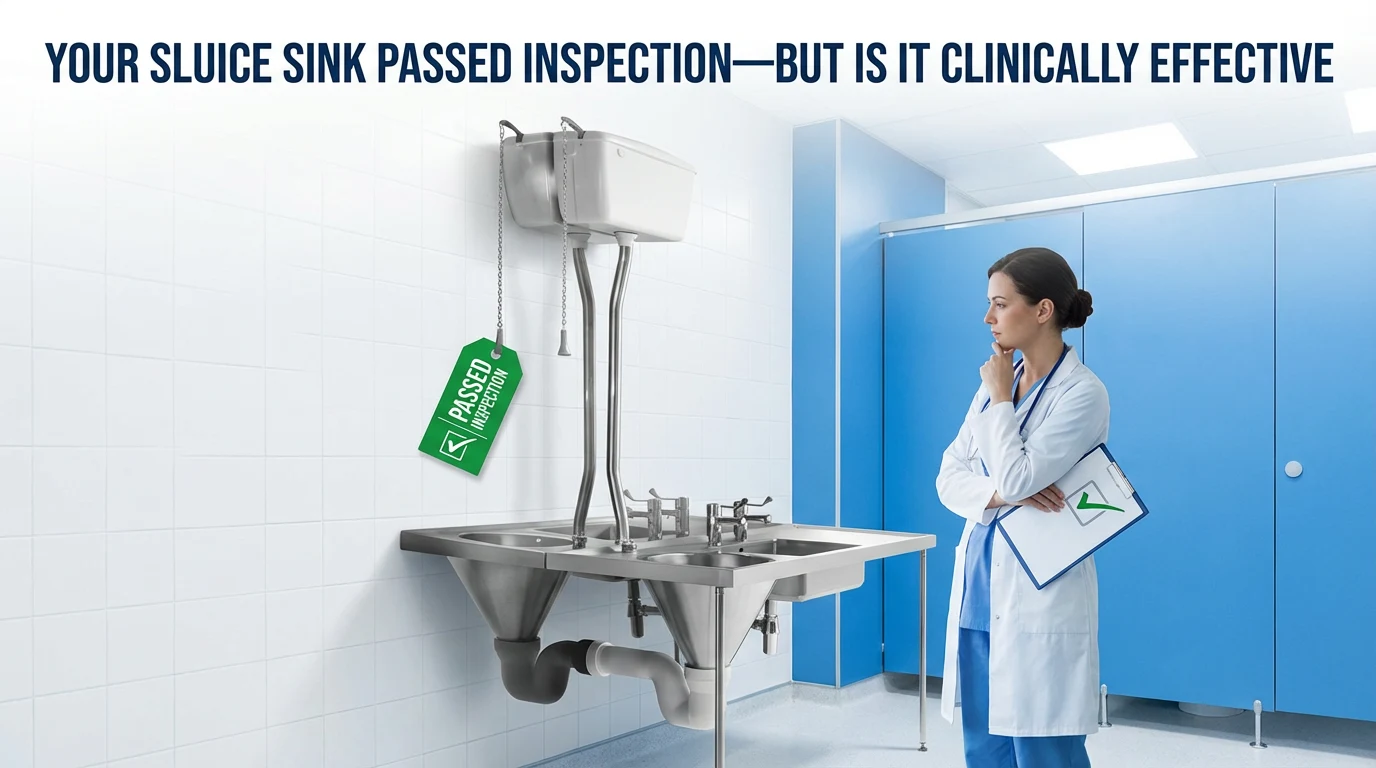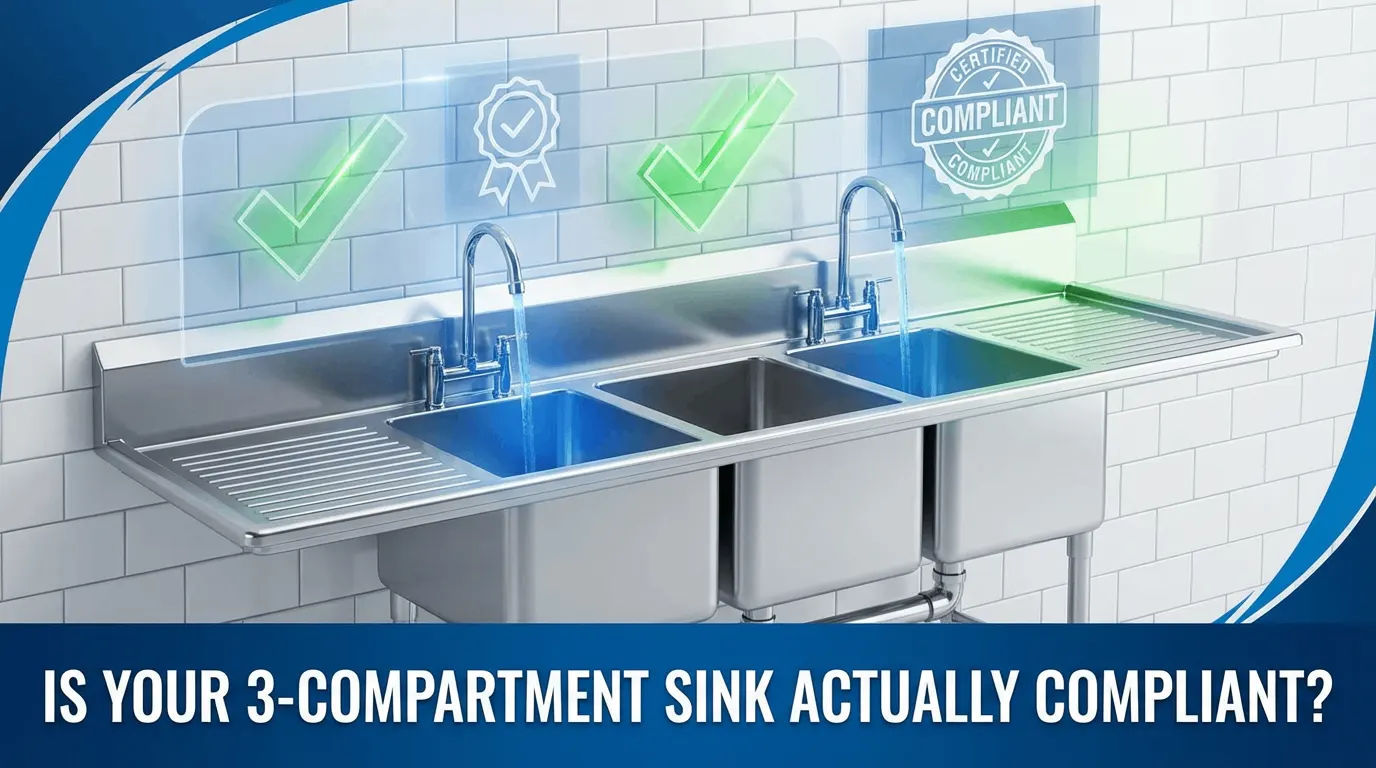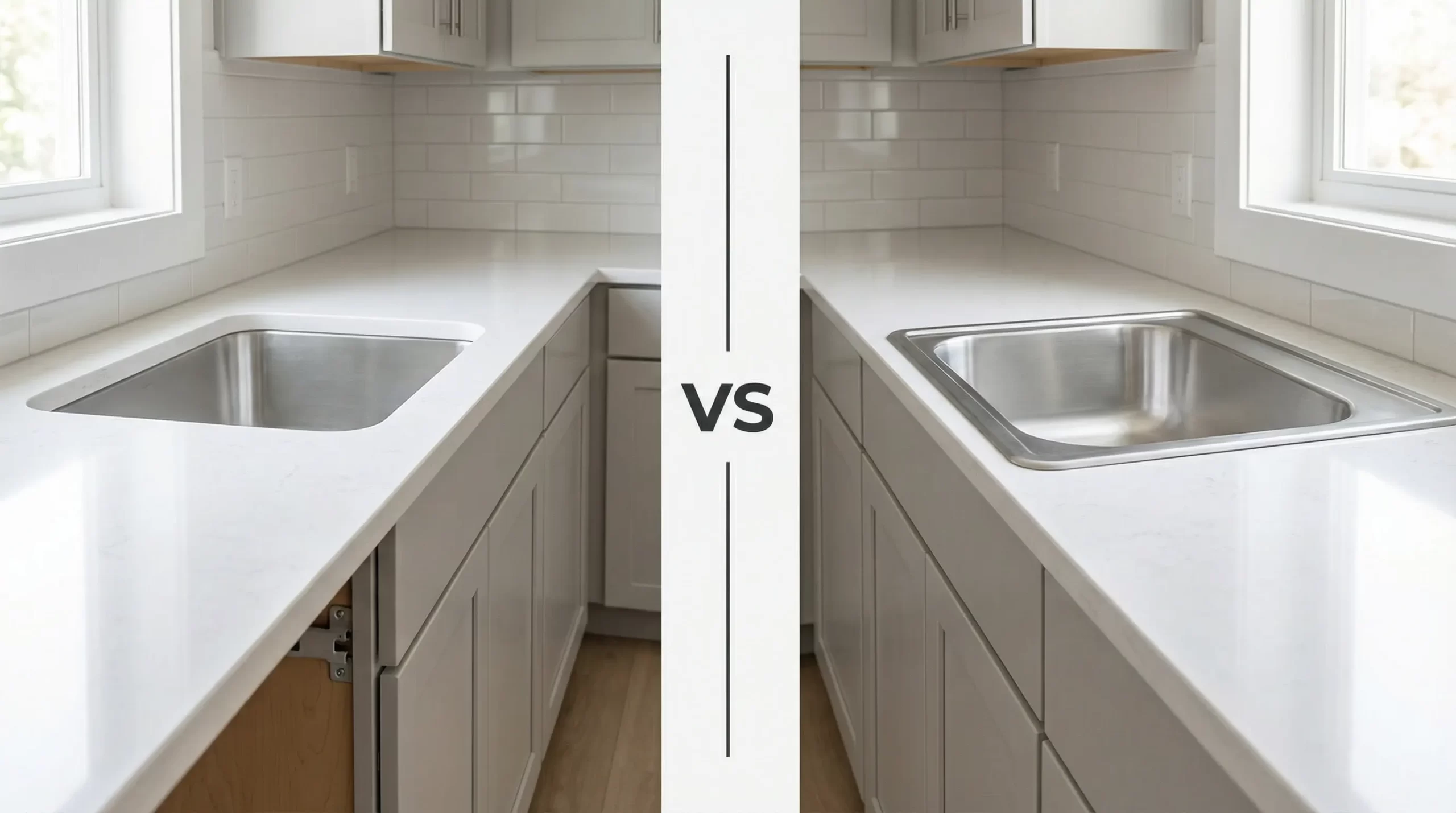Which Material Works Best for a Utility Sink
Hey there, you picking a utility sink for a commercial kitchen, factory, or hospital? It’s gotta do more than just look good or be cheap. This sink’s your go-to for scrubbing greasy pots, cleaning tools, or keeping things sterile. The material you pick decides how long it lasts, how clean it stays, and what it costs over time. So, what’s the best utility sink material for tough jobs?
We’re diving into stainless steel, cast iron, plastic, and more to show why stainless steel utility sinks often come out on top for commercial sinks or laundry room sinks. We’ll cover durability, hygiene, maintenance, and setup to help you make a smart choice. Let’s get to it!
Key Criteria for Choosing Utility Sink Materials
Choosing a utility sink for a commercial job isn’t just about price or style. You need a sink that can handle rough use, stay clean, save money long-term, and fit your space. Whether you’re a contractor, facility manager, or buyer, here’s what matters for the best utility sink material: durability, hygiene, maintenance, and installation. These are the deal-breakers for a commercial sink or laundry sink in B2B settings.
Durability
A utility sink in a busy kitchen or factory gets hammered—think heavy pots, tools, or chemicals. It’s gotta be tough to avoid costly replacements. A stainless steel utility sink with 304-grade steel (18% chromium, 8% nickel) lasts 15-20 years, even in high-traffic spots. Plastic utility sinks warp quick under heavy loads, and cast iron utility sinks chip easy, making them less reliable for commercial kitchen sinks or large utility sinks.
Hygiene
If you’re in food service or healthcare, hygiene’s non-negotiable. A commercial sink must meet NSF or FDA standards to ensure safety. Stainless steel’s smooth, non-porous surface stops bacteria and cleans fast, making it perfect for handwash sinks or laundry room sinks. Scratches on plastic sinks trap germs, and ceramic sinks crack, creating spots where bacteria hide. A stainless sink keeps you compliant and audit-ready.
Maintenance
Nobody wants a sink that’s a chore to maintain. A stainless steel utility sink needs just a quick wipe with soap, saving 30-50% on maintenance costs compared to cast iron sinks or copper, which need special care. For folks watching budgets, a heavy-duty sink like this is a no-brainer for utility sinks for laundry room or utility room sinks.
Installation
Heavy cast iron sinks or ceramic sinks need extra support, driving up setup costs. A stainless steel sink is lighter, with options like wall mount utility sink or freestanding sink, making it easy to fit tight corners or custom layouts. It blends with modern equipment, saving contractors time on utility room sink or commercial sink installations.
These factors—durability, hygiene, maintenance, setup—point you to the best utility sink material. Next, we’ll compare the options head-to-head.
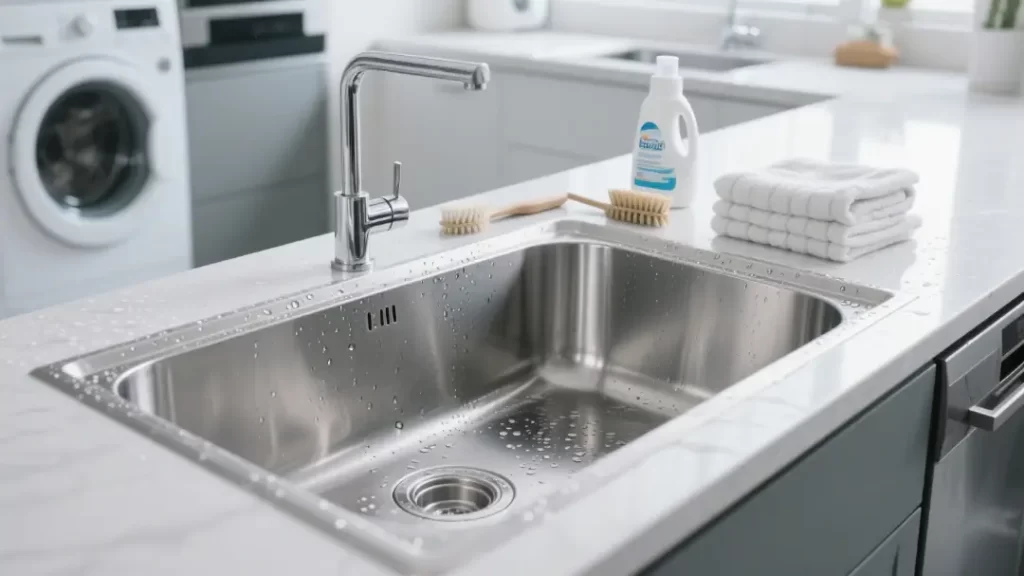
Comparing Common Utility Sink Materials
Let’s put utility sink materials to the test: stainless steel, cast iron with enamel, plastic, porcelain, and copper. Each has strengths and weaknesses, but for commercial sinks or utility sinks for a laundry room, some stand out. Here’s the breakdown to find the best utility sink material.
Stainless Steel
A stainless steel utility sink is like a tough workhorse that keeps going. Made with 304 (18% chromium, 8% nickel) or 316 steel (extra corrosion-resistant), it lasts 15-20 years under heavy use. Its smooth surface cleans easy, meeting NSF standards for commercial kitchen sinks or mop sinks. You get 14-18 gauge options (thicker is sturdier) and mounts like wall mounted utility sink or stainless steel utility sink freestanding. The catch? 316 costs 20-30% more, and thinner gauges might dent. A 304, 16-gauge stainless sink hits the sweet spot for cost and durability.
Best for: Kitchens, hospitals, factories needing commercial utility sinks or deep utility sinks.
Cast Iron with Enamel
Cast iron sinks with enamel coating are solid with a classic look, good for scrubbing heavy gear. The smooth coating cleans okay but chips if hit hard, leading to rust or stains. They’re heavy, needing extra support for setup, and don’t handle harsh cleaners well. They work for laundry utility sinks in low-traffic spots but aren’t ideal for large utility sinks in busy commercial sinks.
Best for: Quiet laundry rooms or utility room sinks.
Polypropylene/Plastic
Plastic utility sinks are cheap, lightweight, and resist chemicals, making them great for outdoor utility sinks or temporary setups like construction sites. But they scratch, warp, and stain easily, bad for hygiene or deep utility sinks in kitchens or hospitals. They’re not a good fit for utility sinks for laundry room where durability matters.
Best for: Garages or outdoor utility sinks.
Porcelain
Ceramic utility sinks have a glossy finish and resist chemicals, nice for laundry room sinks or decorative spaces. But they crack under heavy impact, trapping germs, and are tough to install due to their weight. For commercial sinks, they’re risky where hygiene and durability are critical.
Best for: Low-use, decorative laundry utility sinks.
Copper
Copper has natural germ-fighting power and a fancy look but needs constant polishing and costs a ton. It’s too high-maintenance for utility sinks for a laundry room or commercial utility sinks, better suited for upscale spots with light use.
Best for: High-end restaurants needing a statement sink.
Material Comparison Table
| Material | Durability | Hygiene | Maintenance | Installation | Cost | Best Use Case |
|---|---|---|---|---|---|---|
| Stainless Steel | Excellent | Excellent | Low | Easy | Moderate | Kitchens, hospitals, factories |
| Cast Iron/Enamel | Good | Moderate | Moderate | Complex | Moderate | Low-traffic laundry rooms |
| Polypropylene | Poor | Poor | Moderate | Easy | Low | Outdoor or temporary use |
| Porcelain | Moderate | Moderate | High | Complex | Moderate | Decorative spaces |
| Copper | Good | Good | High | Complex | High | High-end settings |
Stainless steel leads for commercial sinks and utility room sinks.
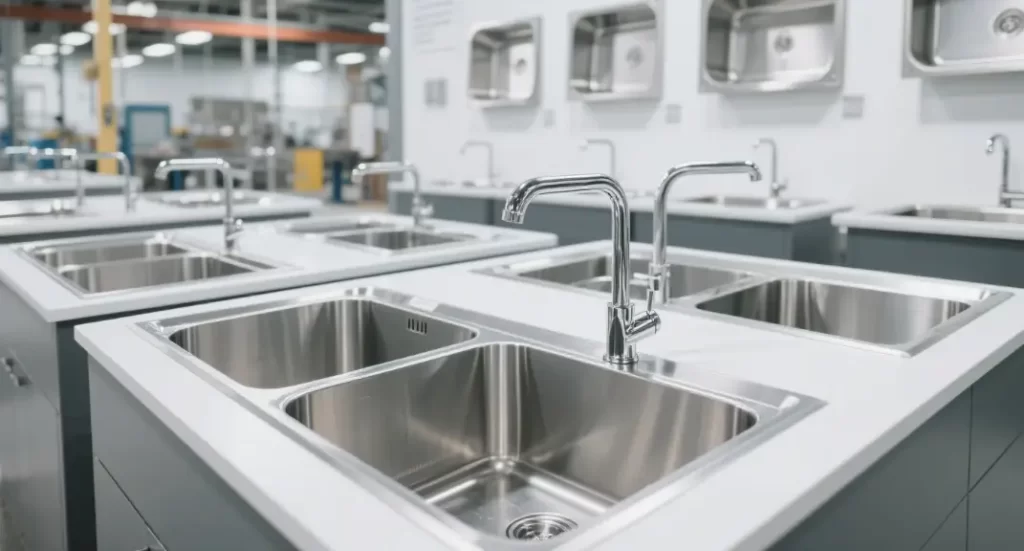
Why Stainless Steel is the Best Choice for B2B Settings
You’re probably leaning toward a stainless steel utility sink for your utility room sink, and for good reason. It’s the top choice for B2B settings like restaurants, factories, or hospitals, hitting all the marks on hygiene, cost, and flexibility. Here’s why it’s the best utility sink material, with details to help you decide.
Meeting Industry Standards
Hygiene’s a big deal in food service or healthcare. A commercial sink needs to meet NSF or FDA standards to stay safe. Stainless steel’s non-porous surface stops bacteria and handles tough cleaners, making it perfect for commercial kitchen sinks or hand washing sinks. A 304 stainless utility sink passes health inspections with ease, unlike plastic utility sinks that get scratches or ceramic utility sinks that crack and trap germs. One restaurant we know had zero hygiene violations using a stainless steel utility sink paired with a utility sink faucet with sprayer for quick cleaning.
Long-Term Cost Efficiency
A stainless steel utility sink costs more upfront but saves you money over time. It lasts 15-20 years with minimal upkeep, cutting maintenance costs by 30-50% compared to cast iron utility sinks or copper, which need frequent care. For budget-conscious managers, a 16-gauge 304 commercial utility sink is like buying a reliable truck that runs forever without constant repairs. It’s a smart pick for utility sinks for laundry room or utility room sinks.
Customization and Flexibility
Every project’s got its own needs. Stainless steel offers 14-18 gauge options (14 is tougher, 18 is lighter) and mounts like wall mount utility sink or freestanding utility sink. Need a deep sink for big pots in a kitchen or a small utility sink for a tight factory corner? You can get custom features like utility sink with drainboard or sink with cabinet for extra storage. Stainless is lighter than cast iron, so installation’s easier, saving time on commercial sink setups.
Xinhe’s Expertise
We at Xinhe craft 304 stainless steel utility sinks with seamless welding to prevent leaks and germ buildup. Our NSF-certified commercial sinks come with tools like online sink selectors and expert support. Whether you need a wall hung sink for a hospital, a large utility sink for a factory, or a sink with cabinet and countertop for a laundry room, we’ve got B2B sink solutions that fit your project perfectly.
Real-World Applications of Stainless Steel Sinks
Here’s how stainless steel utility sinks perform in real B2B settings, showing why they’re the best utility sink for tough jobs.
Commercial Kitchens
A hotel’s commercial kitchen sink deals with greasy pots and pans during rush hour. A 16-gauge 304 stainless steel utility sink handles the abuse, meets NSF standards, and cleans fast with a utility sink faucet with hose connection. One kitchen saved 20% on cleaning time compared to a ceramic sink that kept chipping, making tasks like dishwashing smoother.
Factories
Factories need large utility sinks for cleaning tools or soaking mops. A freestanding sink in stainless steel resists harsh cleaners and fits tight spaces, saving one plant 10 hours a week in maintenance compared to a plastic sink that warped under heavy use. A utility sink with drainboard added extra workspace for efficiency.
Healthcare
Hospitals demand sterile handwash sinks for tools or linens. A wall mounted sink in stainless steel ensures a clean setup, helping a medical center pass audits with no violations, unlike a ceramic sink that cracked and caused hygiene issues. The sink’s utility sink drain system kept things running smoothly.
These examples show why stainless steel is the best utility sink for commercial sinks in demanding environments.
How to Choose the Right Utility Sink
Ready to pick your utility sink? Here’s a simple guide to find the best utility sink for your B2B project.
Assess Your Use Case
Think about what you need: kitchens want deep utility sinks for big pots, factories need large utility sinks for tools, and hospitals prioritize hygiene with hand washing sinks. A stainless steel utility sink fits most jobs, with wall mount utility sinks for tight spaces or freestanding utility sinks for bigger areas. Features like a utility sink with cabinet or utility sink with drainboard can add storage or workspace.
Balance Budget and ROI
A stainless utility sink costs more upfront but lasts 15-20 years with low maintenance. Plastic utility sinks are cheap but fail fast, hiking long-term costs. A 304 commercial sink with a utility sink faucet with sprayer offers great value for B2B sink solutions, especially for utility sinks for laundry room.
Work with a Trusted Supplier
We at Xinhe provide NSF-certified stainless steel utility sinks with custom options like utility sink with cabinet and countertop or utility sink with drainboard. Our expert support ensures your commercial utility sink fits your project’s needs perfectly.
FAQs
Why is stainless steel the best for commercial sinks?
It lasts 15-20 years, meets NSF standards, and cleans easy, making it ideal for commercial kitchen sinks or mop sinks in busy settings.
What’s the difference between 304 and 316?
304 is cost-effective for most B2B sink solutions; 316 has extra corrosion resistance but costs 20-30% more, better for harsh environments.
How do I clean a stainless steel utility sink?
Use soap and a soft cloth; avoid bleach to keep your commercial utility sink looking good and functional.
How do we help with utility sinks?
We offer NSF-certified stainless steel utility sinks with custom options like utility sink with countertop or utility sink faucet with hose connection, plus expert support for your project.
Conclusion
For B2B settings, stainless steel is the best utility sink material, nailing durability, hygiene, and low maintenance. Xinhe’s stainless steel sinks offer NSF-certified quality with custom options like wall mount utility sinks, deep sinks, or utility sink with drainboard for kitchens, factories, or hospitals. Visit us at xstainless.com to explore commercial sinks or get a quote for your B2B sink solutions. Pick smart—your business deserves a reliable utility room sink.


